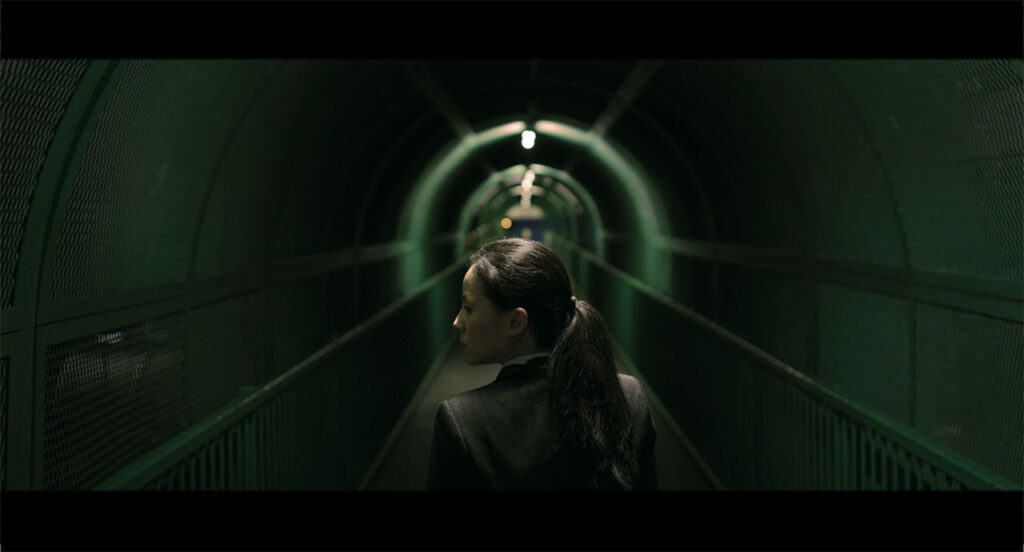How the Southeast Asians do it: Sex in SEA cinema



This article contains spoilers for the following films: The Fox Exploits the Tiger’s Might, Junilyn Has and For We Are Strangers.
Sex is all but taboo in this year’s festival programme, with many of the films in the SEA Short Film competition engaging with the idea of sexuality from a myriad of engaging angles. Sex is often explored in relation to power, or used as a means of social commentary, but the idea of sex in and of itself seems to also be of fascination to many of the short films on display. In many ways, filmmakers are no longer afraid to place the camera squarely within the bedroom, thereby giving us an exciting, voyeuristic gaze into a critical aspect of social life.
The Fox Exploits the Tiger’s Might confronts sex with an uncomfortable, in-your-face approach. The raw intimacy of the opening close-up of Aseng masturbating furiously, sweat on his face establishes the a la Last Tango atmosphere the film is yearning towards. But here, sex isn’t graceful or in any way erotic. It is pornographic, with Aling’s incredibly suggestive, fox-like gaze, and wringing of wet towels accentuating the physicality of sexual attraction, as opposed to its eroticism. The film does not hold back on sex, does not add a filter or lens to it, and does not distance itself from the phenomenon through portraying it on-screen. Instead, through shots that imply, suggest and provoke, Fox draws us into its sexual intrigues with furious intent.
All of this rests insidiously beneath veils of normalcy and images of conservatism. Ci Amei whose maternal figure and old age lures us into believing that she exists beyond the sexual plays of the other characters. But the use of the water can Amei uses as a visual pun on Aseng spitting on his hand to masturbate hints to us otherwise. Further, the Bodyguard’s sudden, unexpected advances on her totally subvert our expectations of her distance from sex, suggesting instead that the sexual themes of the film are in fact totally pervasive, thereby removing any possible centre of reason and asexuality. This prevents a critical distance from sexuality from the film, further allowing for a non-condescending look at sexual attraction. This is the film’s way of honestly engaging with the subject matter that lies at its core without distance or pretension.
Sex also is presented in relation to power. David’s objects of attraction are often inanimate for instance, and often are objects that he can control to his will. The Chun-li model on the side of the Street Fighter arcade machine symbolizes this, showing us how David literally wants control – literal video-game control – over the images of his sexual obsessions. What better game than Street Fighter too, a game of tussling and fighting: a game that oozes conflict and power plays. Aseng plays Chun-li in the games because he’s supposed to be weaker and inferior to David; but only in theory.
Junilyn Has on the other hand deals with sex from a comic, satirical distance. This distance enables the film to comment on the darker side of sex without being too heavy-handed about it. The main character, Junilyn, is introduced to us through a toilet; setting off to portray its character in as non-erotic a manner as possible. The over-the-top barrel strip dance is hilariously hyper-sexual, lending it a bizarre undertone. It is also jarringly set against background sounds of birds, crowing hens and passing cars. In this way, the strip-club music played on the malfunctioning radio is drowned out by the whole soundscape of Philippines, thereby staging this hyper-sexual dance against a wider, social background that gives it a funny, yet satirical edge.
Yet the dance precedes Junilyn awkwardly clamouring out of a rusty barrel, dancing with robotic, lifeless gestures. She does not have the swagger and sexual confidence of her co-worker; instead, with slouched shoulders and an expressionless face she disappoints her boss. In many ways, Junilyn is placed within these circumstances – within these walls filled with nude posters and thus the symbolic representations of many virile male fantasies – against her will. She is the oppressed figure; she is the exploited sex toy who fits with the trends and shoots darts with her vagina if that is what her male customers want.
In this way, where Fox portrayed sexuality as a battleground with guns, Junilyn Has presented it as a rusty, unreliable barrel. In Fox, sex is the levelling field whilst in Junilyn Has, sex is the trap for these women struggling to climb out of their socio-economic pit.
For We Are Strangers deals with sex as an event, around which the details of its narrative are situated. Here, sex in its manifestation as rape is portrayed as a traumatic event. Its main character is the victim who deals with the event in a cool, stoic manner that belies her hidden thirst for vengeance.
In its climactic sequence, the main character walks through a green subway tunnel that is dimly, eerily lit. As she encounters her past self being raped, a train passes by. The imagery on display in the background accentuate the character’s encounter with sex; it is loud, noisy and overwhelming, much like the large green arches of the phallic tunnel and its complementing claustrophobia.
The sexual image of her wandering through the dark recesses of not just her mind, but her memories as clouded and shaken by this traumatic event at the passing of a phallic train (which reminds one of the famous image of a train passing through a tunnel from Strangers on a Train that signalled its characters having sex) suggest sex as a monstrous, fast, unemotional beast that hits the protagonist like a high-speed train.
Yet all three films deal with sex as a corporeal event that is beyond just pleasure. Sex is an event that undergirds life in these films; it is instead a transformative force that certainly lasts beyond the night. It is a means for social commentary, it is a stage for psychodrama, and it is the passion and fuel for revenge. Sex is more than just bodily interaction; and these films remind us of its malleable role not just in Southeast Asian cinema, but also in life at large.


